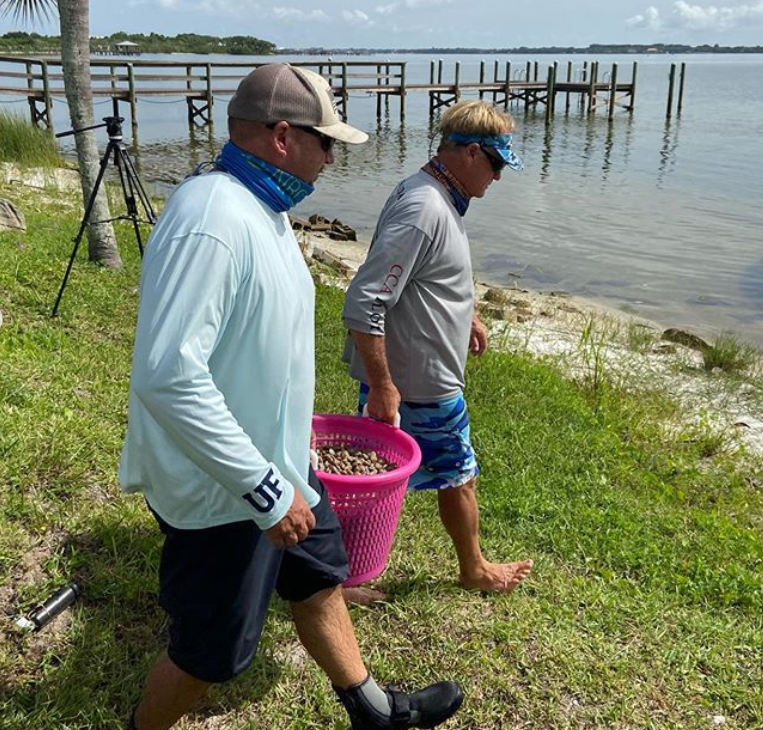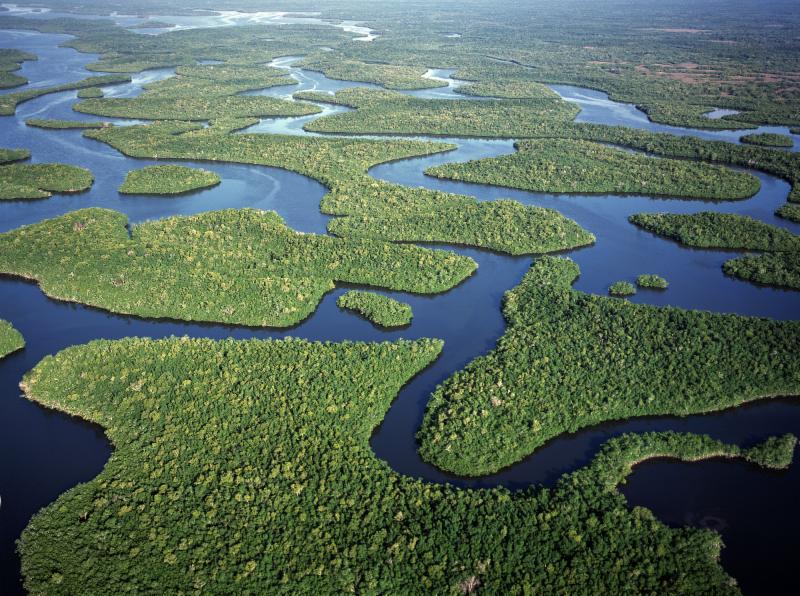PartVu Xchange Talks Boating spoke with Frank Gidus, Director of Habitat and Environmental Restoration for CCA Florida. Frank joined CCA seven years ago, bringing years of experience and expertise in environmental services to the organization.
CCA, or Coastal Conservation Association, was created in 1977 after drastic commercial overfishing along the Texas coast decimated the trout and redfish populations. CCA started with fourteen concerned individuals that came together for a common cause. Today, CCA is a large national organization with over one hundred twenty-five thousand members and active charters in seventeen states.
Want to listen to this podcast? You can find PartsVu Xchange Talks Boating on Apple Podcasts, Spotify, Amazon Music, iHeart Radio, and Stitcher.
Can you explain what habitat restoration is and the importance of the work? How did the marine habitat became so damaged in the first place?
Frank: At CCA, our habitat work focuses on several key aspects, including the deployment of artificial reefs, oyster reef restoration, living shoreline restoration, salt marsh and mangrove plantings, oyster recycling programs, and various research projects.
The best way to describe the degradation of our marine environment is the adage, “death by a thousand cuts. ” You can’t really point the finger at one or two things that have been the cause of our issues in the state of Florida, as many factors have contributed to the decline of our marine environment.
Many different issues that negatively affect our water quality include wastewater discharge from treatment plants, outdated infrastructure on land, septic tanks in coastal areas, untreated stormwater issues, and fertilizer runoff. So, several factors regarding adverse effects on Florida’s marine environment come into play. The genesis of the issues dates back to the post-World War II migration of people to Central Florida.
“Florida is a beautiful place to live, so people want to be here. However, the population boom has had a profound impact on our state.”
Many times, when you look at the history of significant issues like algae blooms, there is a natural occurrence like a hard freeze, heavy rain, or a hurricane that kicks off these sorts of problems. However, our drastically increased population is putting increasing pressure on our environment.
Some key areas in Florida have reached a tipping point, warranting special attention, focus, and federal funding. For example, the Indian River Lagoon lost most of its seagrass, leading to a domino effect in the area. As a result, manatees are dying off by the hundreds, and fisheries are collapsing. We also see a decline in the oyster and clam populations, so we’re losing a filter-feeding component.
The best way to restore all of this is the way it happened. We need a “thousand cuts” approach – we must attack the problem with a multi-pronged approach rather than relying on just one or two actions. We need to update water treatment facilities, replace old septic tanks in coastal areas, and stop fertilizing during heavy rain seasons. Finally, given the constant influx of people to the state, our government needs to develop ways to protect our environment.

How did you get your start with CCA Florida?
Frank: I’ve been a member of CCA Florida since 1988, but I didn’t start working here until 2015. I was an environmental consultant for 24 years in the southeast, but most of my work was done in Florida.
Many issues prompted me to become involved with CCA on a deeper level. Environmental issues and my family heritage were the most important factors that motivated me.
Growing up, I was the youngest of nine children. When I was seven, my father allowed me to venture out to the Indian River with my older brothers. That trip was one I’ll never forget. We embarked on a shrimping trip at night with lights, dip nets, and the rest of our setup. Once we anchored up and turned the lights on, the real show began.
I remember it like it was yesterday. The sea life was vibrant and abundant; we could see everything from shrimp and crabs to bait fish and trout. That trip had a significant impact on the rest of my life.
As I got older, I made more trips to the Indian River Lagoon and other places in Florida that continued to change my life. When I was sixteen, I saved enough money to buy a car and boat and have owned a boat ever since. I have spent much time in various fisheries and have been fortunate to see our marine ecosystems at their peak. During the heydays of fishing, l mainly fished in Mosquito Lagoon and the Yankeetown areas, and I also fished quite a lot in the Everglades.
“I was lucky to fish in an era where our fisheries were thriving, but I have witnessed a gradual decline in the overall health of our marine systems since 2000.”
I remember one particular trip back in 2013. My wife and I ventured out for some fishing. We arrived at our spot early as usual, but unlike almost every other time, I didn’t notice any of the typical sounds of nature nor see any mullet or baitfish moving. We didn’t catch many fish on that trip, only to realize that there was a major brown algae bloom.
My wife asked me a few questions about the bloom’s ramifications that I couldn’t fully answer. It was at that time that I realized that I needed to do more, and not long after that, I was presented with an opportunity to come work for CCA Florida.
What are some of CCA’s marquee habitat restoration initiatives?
Frank: It isn’t easy to pick out one or two projects because I feel like all of our projects are valuable. I’ve realized that partnering with other organizations is very important. By joining forces, we can leverage relationships to take on larger and more effective projects.
Since 2010, CCA has contributed more than one million dollars to habitat restoration projects in Florida, and we’ve been able to leverage that money with our partners to over eight and a half million dollars over twelve years.
Since 2015, we’ve completed over fifty habitat restoration projects. For example, we’re currently working on seven artificial reefs we will deploy this year and almost a dozen restoration projects.
How does marine life adapt and react to the deployment of artificial reefs?
Frank: It’s incredible how fast sea life can adapt to the deployment of artificial reefs. We’ve seen situations where divers go down to check on a new underwater structure, and within hours, we already see life migrating to the new home we’ve created. However, within a year or two, we usually see signs of significant sea life activity.
Do you have large projects planned for the upcoming year, or is it mostly a series of smaller projects?
Frank: Actually, probably a series of larger projects. Most of our artificial reef and habitat projects are significant endeavors. We strive to use funds on things that have the most bang for the buck while having the highest chances of success.

Can you tell us more about the importance of clam restoration projects and comment on your progress with those initiatives?
Frank: That’s an excellent question. The clam population has largely been overlooked in Florida because they are bottom dwellers, so they’re out of sight, out of mind. However, clams play a significant role in filtering out pollutants and are vital to the health of seagrass beds.
I remember receiving a call from Captain Blair Wiggins in 2017, shortly after I started with CCA. He recalled a time when he would wade fish through the Indian River Lagoon while walking on seemingly endless numbers of clams. Unfortunately, in the eighties and nineties, commercial clamors came in to harvest the area and decimated the clam population.
Soon after that call from Blair, I received a call from the Florida Fish and Wildlife Conservation Commission. They were working on a grant proposal for clam restoration, leading to an ongoing partnership between the FWC, the University of Florida, Blair Wiggins, and CCA.
Since then, we’ve secured over a half million dollars in grant funding and replenished the clam population to the tune of about twelve million clams in the Indian River Lagoon. Our initial efforts focused on Volusia and Brevard counties, but we recently received a two hundred thousand dollar grant to work on Indian River and St. Lucie counties.
What is the design and build process for artificial reefs?
Frank: It comes down to planning, planning, and more planning. Gone are the days of deploying cinder blocks, tires, and refrigerators. Florida’s learned plenty over the years from both its successes and failures.
Acquiring the right permit is paramount to the process. State or federal permits can take up to two years and must be done before moving forward. Once approved, those permits will come with conditions and details about what materials you can use in a project. Usually, the reef includes concrete as the dominant material, but the conditions will contain information about contaminant restrictions, size limitations, and other limiting factors. In addition, some permits allow for reefs built from ships or steel, but those builds also include necessary restrictions.
Partnerships are critical when permitting because businesses like ours can’t apply for them. Only government entities or academic institutions can apply, so a mutually beneficial relationship with them is essential. In addition, once approved, a qualified marine contractor must be involved in the project.
How can people get involved with CCA Florida?
Frank: If you’re not a CCA member, I encourage you to join to learn more about our mission. Memberships are only thirty-five dollars per year and include weekly emails packed with information about habitat projects and volunteer opportunities. The door is wide open for involvement, and we welcome new members.
For more information on CCA, visit ccaflorida.org, where you can learn more about coastal conservation projects, restoration work, and membership opportunities.












